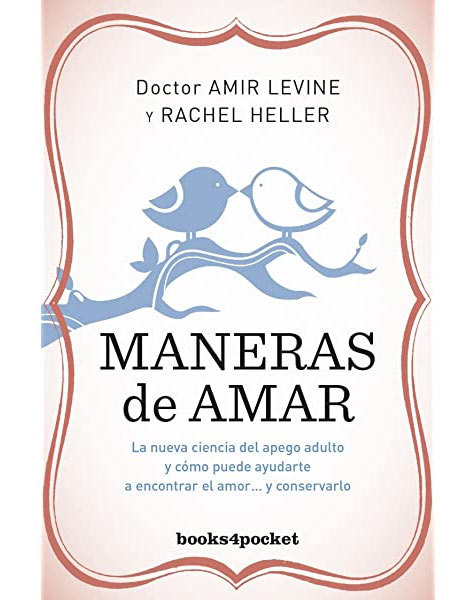
Attached, written by psychologists Dr. Amir Levine and Rachel Heller, is an interesting self-help book that aims to bring the reader the latest advances in scientific research on how adults tend to form emotional bonds with their partners.
The authors do a great job in conveying, in simple and understandable terms, the main scientific findings on attachment theory and its influence on adult relationships.
Attachment theory explains the way in which we establish affective bonds with other people, especially with people close to us, based on the experiences with our parents or main caregivers during the first years of life. Through these experiences we learn basic notions of the functioning of relationships in terms of intimacy, security, care, dependence and autonomy. The way in which adults establish affective ties with their partners is similar to those established between parents and children. Therefore, these early experiences will end up forging our particular style of attachment; that is, the specific way in which we tend to relate affectively with other people.
Attachment styles are stable over time. However, this does not mean that they are rigid. Attachment styles are malleable; that mean we can learn new ways of relating affectively with our partners in order to have healthier and more satisfying relationships.
This book focuses primarily on attachment styles in adult relationships. The authors of the book explain that, depending on our attachment style, we will differ in the expectations we have about the relationship and our partners, the ideas about intimacy, the attitude towards sex, the ability to express desires and needs, and the way we handle conflict.
If partners differ in attachment styles, this can lead to conflicts or misunderstandings, communication problems, difficulties in understanding each other's needs, as well as difficulties in meeting those needs. Therefore, knowing our own attachment style and the one of our partners, can provide us with relevant information to understand the difficulties we are going through in order to successfully address them.
The authors describe 3 styles of attachment: anxious attachment, avoidant attachment, and secure attachment. Everyone fits into one of these categories; scientific studies have found these styles in different countries and cultures. These are the main characteristics of each attachment style:
Anxious attachment:
People with this type of attachment long for closeness and intimacy. They usually want to be with their partner 100% of the time and are often upset when their partner spends time with other people or doing other activities. They tend to be obsessed with their relationship and doubt whether their partners can meet their needs; they often feel that they have a greater need for intimacy than their partners, so they feel very insecure about the future of their relationship. The fear of abandonment is often very present.
Avoidant attachment:
People with this type of attachment long for autonomy and independence, so they are often cold and emotionally distant. Emotional intimacy makes them uncomfortable, so they avoid closeness. They do not like to feel dependent on other people, and have difficulty trusting their partner. They tend to have difficulties opening up emotionally and communicating their needs, problems or difficulties, and do not show much concern for relationships or how their partner may feel.
Secure attachment:
People with this type of attachment are usually warm and loving. They tend to feel comfortable approaching and becoming intimate with their partners. They tend to manage well the balance between intimacy and independence. They do not usually worry about their partner leaving them. They tend to communicate their needs and feelings appropriately and are responsive and their partner's needs by offering support when needed it.
Of the three attachment styles, secure attachment is the healthiest and the one that generates less conflicts and difficulties in relationships. Relationships formed by couples in which one or both partners are anxious or avoidant, tend to have more conflicts and more difficulties communicating and understanding each other needs.
This book provides a very detailed description of thinking patterns, emotional states, and behaviors of people in adult relationships according to each attachment style and provides useful and simple tools (questionnaires) to identify our attachment style and the one of our partners. In addition, it describes the specific emotional needs and weak points of each style and provides advice and strategies for dealing with the difficulties that can be encountered when the members of the couple differ in attachment styles.
Especially important is the book’s section that describes secure attachment, where specific guidelines and strategies are provided in order to improve communication styles, conflict resolution techniques and the expression of needs for people with anxious or avoidant attachments, to help them get closer to those with secure attachment styles.
In conclusion, this book is a useful guide to help us navigate the world of intimate relationships by providing a deeper understanding of how we relate to our partners in order to achieve greater psychological and emotional well-being within the couple.
Division of Psychology, Psychotherapy and Coaching
Psychologist
Adults
Languages: English and Spanish

